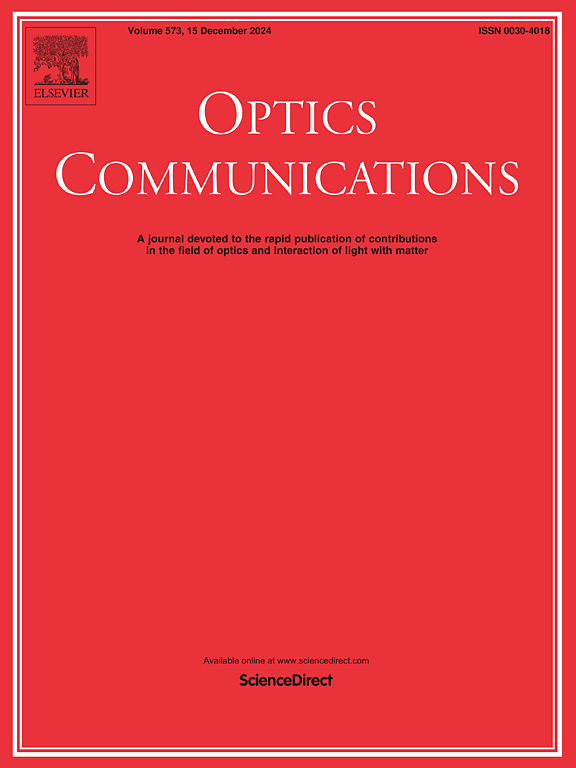Wideband continuously-tuned matrix DFB laser array assisted with enhanced self-heating effect based on REC technique
IF 2.2
3区 物理与天体物理
Q2 OPTICS
引用次数: 0
Abstract
In this letter, we propose and experimentally demonstrate a wideband continuously-tuned matrix distributed feedback (DFB) laser array. This DFB laser array is developed based on the reconstruction-equivalent-chirp (REC) technique and has an enhanced self-heating effect. The laser array is made up of 24 DFB lasers that are arranged in an 8 × 3 matrix interleaving pattern. Moreover, it integrates a three-level cascaded Y-branch optical combiners and an active semiconductor optical amplifier (SOA) on a single chip. In order to achieve continuous wavelength tuning, we increase the resistance of the laser to enhance the self-heating effect of the laser, which in turn expands the current-tuned wavelength range of the laser. The tunable 8 × 3 REC-DFB laser array employs a current tuning method. Consequently, in comparison with the conventional wavelength tuning methods relying on thermoelectric cooler (TEC), it can reach lower power consumption and faster continuous wavelength tuning. The proposed laser array is applicable to a 49 nm continuous wavelength tuning situation. Its output power is more than 38 mW, and all side mode suppression ratios (SMSRs) are higher than 40 dB. This research provides a new path for realizing semiconductor lasers with low power consumption and a wide tuning range.
求助全文
约1分钟内获得全文
求助全文
来源期刊

Optics Communications
物理-光学
CiteScore
5.10
自引率
8.30%
发文量
681
审稿时长
38 days
期刊介绍:
Optics Communications invites original and timely contributions containing new results in various fields of optics and photonics. The journal considers theoretical and experimental research in areas ranging from the fundamental properties of light to technological applications. Topics covered include classical and quantum optics, optical physics and light-matter interactions, lasers, imaging, guided-wave optics and optical information processing. Manuscripts should offer clear evidence of novelty and significance. Papers concentrating on mathematical and computational issues, with limited connection to optics, are not suitable for publication in the Journal. Similarly, small technical advances, or papers concerned only with engineering applications or issues of materials science fall outside the journal scope.
 求助内容:
求助内容: 应助结果提醒方式:
应助结果提醒方式:


